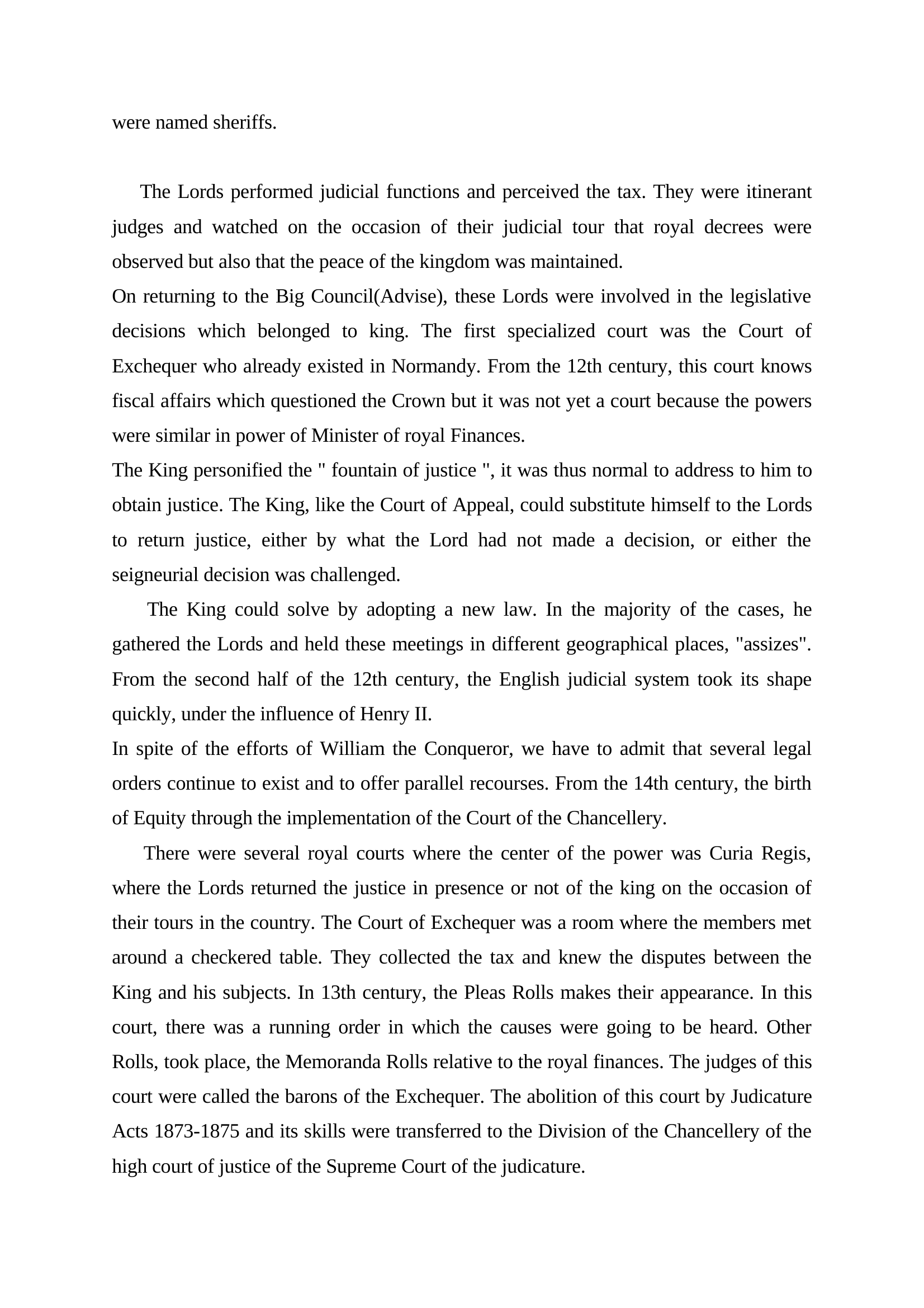common law v equity
Publié le 02/03/2015

Extrait du document


«
were named sheriffs.
The Lords performed judicial functions and perceived the tax.
They were itinerant
judges and watched on the occasion of their judicial tour that royal decrees were
observed but also that the peace of the kingdom was maintained.
On returning to the Big Council(Advise), these Lords were involved in the legislative
decisions which belonged to king.
The first specialized court was the Court of
Exchequer who already existed in Normandy.
From the 12th century, this court knows
fiscal affairs which questioned the Crown but it was not yet a court because the powers
were similar in power of Minister of royal Finances.
The King personified the " fountain of justice ", it was thus normal to address to him to
obtain justice.
The King, like the Court of Appeal, could substitute himself to the Lords
to return justice, either by what the Lord had not made a decision, or either the
seigneurial decision was challenged.
The King could solve by adopting a new law.
In the majority of the cases, he
gathered the Lords and held these meetings in different geographical places, "assizes".
From the second half of the 12th century, the English judicial system took its shape
quickly, under the influence of Henry II.
In spite of the efforts of William the Conqueror, we have to admit that several legal
orders continue to exist and to offer parallel recourses.
From the 14th century, the birth
of Equity through the implementation of the Court of the Chancellery.
There were several royal courts where the center of the power was Curia Regis,
where the Lords returned the justice in presence or not of the king on the occasion of
their tours in the country.
The Court of Exchequer was a room where the members met
around a checkered table.
They collected the tax and knew the disputes between the
King and his subjects.
In 13th century, the Pleas Rolls makes their appearance.
In this
court, there was a running order in which the causes were going to be heard.
Other
Rolls, took place, the Memoranda Rolls relative to the royal finances.
The judges of this
court were called the barons of the Exchequer.
The abolition of this court by Judicature
Acts 1873-1875 and its skills were transferred to the Division of the Chancellery of the
high court of justice of the Supreme Court of the judicature..
»
↓↓↓ APERÇU DU DOCUMENT ↓↓↓
Liens utiles
- Common Law.
- Common Law.
- Lincoln: "The Monstrous Injustice of Slavery" Abraham Lincoln had settled into his Illinois law practice in 1854 when the United States Congress passed the Kansas-Nebraska Act.
- Du symbolisme au surréalisme par Claude-Edmonde Magny Poetry is a divine instinct and unnatural rage passing the reach of common reason.
- Law J ohn , 1671-1729, né à Édimbourg, financier écossais.

































